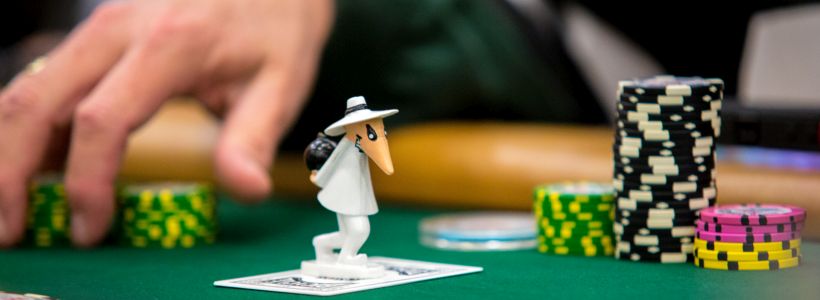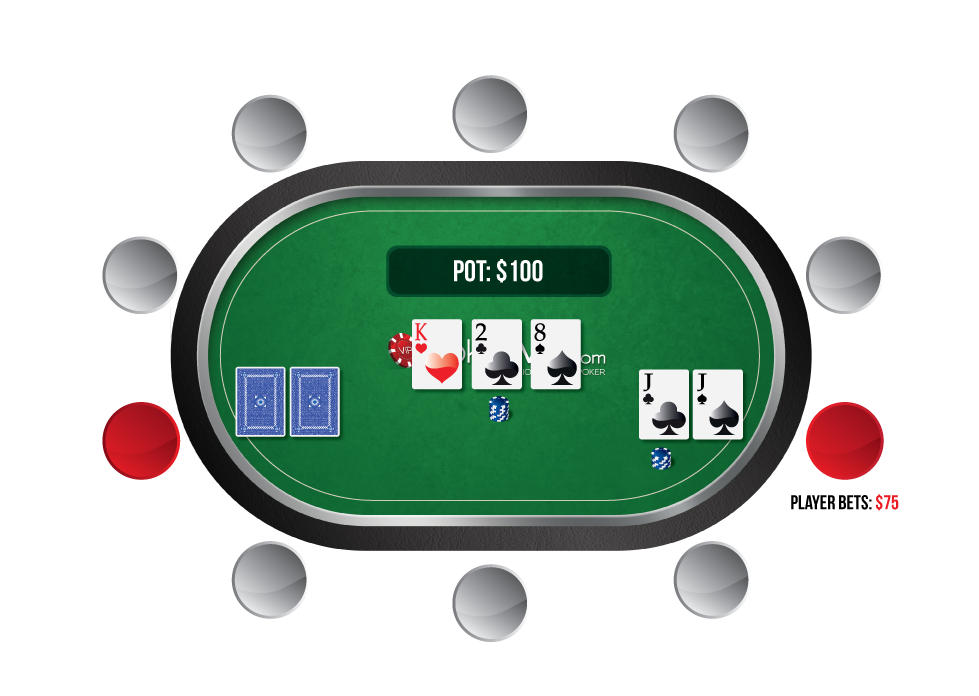
Board texture is one of the most important sources of information in poker. While our opponent's hole cards remain hidden until the potential showdown, board cards stay perfectly visible from the moment they hit the table. It's really important to pay close attention to the community cards and to modify our strategy based on them. This is doubly true for very coordinated textures often called 'wet boards'.
The proverbial A72 rainbow flop has the potential to cause relatively few headaches while QhJh8d can be a real minefield where one wrong move can cost you a ton. That's why in this article we're take a closer look at the traps and pitfalls you might come across when playing on a wet board.
Continuation Betting Too Often
One of the first things a beginner poker player embarking on a journey to improve his or her game learns is the fact that continuation betting is the building block of every winning strategy and it's important to do it often. This - naturally - leads to the situation where the vast majority of player population tends to continuation way to often.
While it's hard to get severely punished for bombing the K42 rainbow board with nearly 100% of our range (especially in the context of micro stakes) doing the same thing on a Ts9c6s board will be a major leak even against a relatively low level opposition. Since both we and our opponents are far more likely to connect on a wet board it makes much less sense to rely on fold equity alone and bluffing with marginal to no equity.

Not Value Betting Thin Enough
This is one of the worst sins people tend to make when playing a hand on a wet board. Since it's easier for our opponents to make a hand on a coordinated texture we're stand to gain a lot more from out medium strength hands than we do on dry boards.
For example, when we're holding something like QcTc on an AcTd2h6s there aren't exactly a ton of hands we can value bet against and we should aim to realize out showdown value. However, on a KdTd6s7s we can get value from a ton of draws, and pair plus draw combos and we should be more inclined to bet.

Overestimating the Implied Odds
Another fairly simple mistake many players make when playing a hand on a coordinated board is overestimating their implied odds situation. We tend to call to liberally with draws especially out of position and rely on our ability to make money on future streets once we complete our draw.
A decision to call a 3/4pot turn bet in position with QT on an AJ97 against a loose aggressive player might be very reasonable since we stand to win a lot of money once we complete our somewhat disguised draw and it's going to be relatively easy to manage the size of the pot on the river since we're in position.

Slowplaying the Top of Your Range
"Slowplay you pay" is a saying as old as poker itself but it's still relevant even in the world of advanced poker solvers. The attempt to check raise 8d8c on a 7c8hTc board instead of leading into a loose passive player is as bad today as it was in 2006, but people sure love to trap other players with their monster hands.
Failing to extract max value from the top of your range is almost as bad as adding unnecessary combinations to the bottom of your range from the game theory point of view so the old adage about fast playing strong hands is still relevant even if you care about the game theory optimal approach.

Not Utilizing the Scare Cards
While mindless cbetting without equity on a wet board will usually lead us nowhere, in situations where our perceived range contains more draws than the perceived range of our opponent's we might get away with some very profitable bluffs with the bottom of our range once the scare card completing our perceived draw hits the board. The second and third hand from the video linked below showcase that perfectly.
During his amazing WSOP run Lex Veldhuis utilized his perceived range to the fullest and managed to put a ton of pressure on his opponents when playing on coordinated board textures.
 More Top Rated Content
More Top Rated Content
Articles
- How to Make a Poker Schedule - Tools You Can Use
- Motivational YouTube Videos - Friend or Foe?
- How to Get in the Zone and Play Your Best Poker
Coaching Videos

